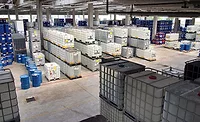An Introduction to the U.S. Trade Remedies Law for U.S. Coating and Sealant Manufacturers

For U.S. coating and sealant manufacturers who have been harmed by competition with low-priced imports, the U.S. trade remedies laws can provide meaningful relief. This article will provide an introduction to two specific trade remedy laws – those concerning (1) antidumping and (2) countervailing duty investigations. Relief from these trade investigations can protect U.S. production operations, profits and employees.
General Overview of U.S. Antidumping and Countervailing Duty Laws
Under the antidumping (AD) statute, members of a particular domestic industry may petition the U.S. government to investigate imports of similar foreign goods and to impose compensating duties where two threshold requirements are met: (1) the imports are sold in the United States at less than fair value; and (2) the low-priced imports are a cause of (or threaten) material injury to the domestic industry. In a countervailing duty (CVD) investigation, the U.S. government must determine: (1) whether imports are being subsidized by the government of the exporting country; and (2) whether the subsidized imports are a cause of (or threaten) material injury to the domestic industry.
Generally, AD and CVD investigations are conducted together on parallel tracks before both the U.S. International Trade Commission (“ITC” or “Commission”) and the Department of Commerce (“Commerce” or “Department”). The ITC – an independent, quasi-judicial, federal agency – determines whether a domestic industry is materially injured or threatened with material injury by the dumped or subsidized imports. In an AD case, the Department ascertains whether the imported products are being sold at less than fair value – or “dumped” – into the U.S. market and calculates the appropriate duty. In a CVD case, the Department is responsible for determining the nature and extent of the government subsidies. The extent of the subsidy then determines the amount of the countervailing duty assessed on the imported merchandise.
The Antidumping and Countervailing Duty Statutes
Adopted as part of the Tariff Act of 1930, the U.S. antidumping statute is a remedial measure that authorizes the imposition of compensating duties when imports are sold at less than normal value and are a cause of (or threaten) material injury to the U.S. industry producing products like those that are imported. The dumping duty is based on the difference between the “normal value” of the product and the price charged for it in the United States. Following a preliminary investigation that results in positive determinations from both the ITC and the Department, a dumping duty deposit is immediately imposed on all imports of the subject products.
Similarly, the countervailing duty statute authorizes the imposition of compensating duties to “countervail” subsidies paid by foreign governments to their country’s exporters. Consequently, the Department calculates the countervailing duty by determining and offsetting the amount of the subsidy. Just as with a dumping duty, a countervailing duty is immediately imposed on all imports of the suspect products following positive preliminary determinations from the ITC and the Department.
Domestic companies and industry trade associations begin the investigative process by simultaneously filing a petition with the Department of Commerce and with the International Trade Commission. After the investigation is initiated, opposing and neutral companies are required (under threat of subpoena) to provide information necessary to the investigation. Foreign producers who do not fully cooperate with the investigation are frequently subject to the application of “adverse facts available,” in effect having the relevant agency draw negative inferences against the foreign producers and in favor of the domestic producers.
AD Investigation: Imports are Sold Below Fair Value
Once an AD investigation is initiated, the Commerce Department is responsible for calculating whether there is dumping. Commerce first calculates normal value, which is based on prices in the foreign companies’ home market. Alternatively, if there are insufficient sales of comparable merchandise in the home market, Commerce will use the foreign producer’s price on sales of the product to third countries. If all home market (or third country) sales are below cost, normal value is based on the fully distributed cost of production plus profit.
Given that the dumping calculation is based on ex-factory, mill net values, the normal value (when based on price) is reduced by any inland freight and other similar charges incurred in delivery of the product by the foreign producer to its own domestic customers (or to third country customers). The export price into the United States is also determined using similar means, including a downward adjustment to reflect transportation costs (both foreign and local), importation expenses, U.S. processing and other such costs. Additional adjustments are made for differences in quality, credit and other circumstances of sale unique to the foreign producers.
After these adjustments to normal value and U.S. price (officially called the “export price” or “constructed export price”), the Department then makes its dumping calculation. The product is considered dumped if the constructed export price – the price of the good in the U.S. market – is lower than the normal value of that product in the producer’s home market. The difference between the two prices is the margin of dumping, which is then divided by the U.S. price to determine the dumping duty percentage.
If the target country is a nonmarket economy (“NME”), e.g., China, the Department uses a special procedure in calculating normal value. In such cases, Commerce makes its calculation by identifying the actual “factors of production” necessary to make the product. For example, in a steel investigation, Commerce would obtain from the NME producer the hours of labor, quantity of raw material and units of electricity the producer actually uses in manufacturing each ton. Those input factors are then assigned values using the cost of labor, raw materials and energy in a comparable – “surrogate” – market economy, such as India. Commerce then adds reasonable overhead and profit (based on data from the surrogate country) to arrive at the normal value for each ton of steel. The surrogate normal value is then compared with the adjusted U.S. price in determining the dumping margin for the NME producer.
CVD Investigation: A Foreign Government Subsidizes Imports
The threshold issue in a CVD investigation is whether a foreign government subsidizes the production or export of merchandise that is then imported into the United States. Subsidizing occurs when a foreign government provides financial assistance to benefit the production, manufacture or exportation of a good. Subsidies can take many forms, such as direct cash payments, credits against taxes, and loans at terms that do not reflect market conditions. The CVD statute and accompanying regulations establish standards for determining when an unfair subsidy has been conferred. The amount of subsidies the foreign producer receives from the government is the basis for the subsidy rate by which the subsidy is offset through higher import duties.
AD and CVD Investigations: Imports Cause or Threaten Material Injury
Before imposing the relevant antidumping and/or countervailing duties, the ITC must first find that the imports are a cause of material injury (or threat thereof) to the U.S. industry. In this regard, injury is defined simply as harm that is more than inconsequential, insignificant or immaterial. Indeed, the domestic industry can demonstrate injury in a number of ways, most helpfully through downward trends in financial data (production, shipments, profits, etc.). Operating losses are not a necessary component of material injury if it is otherwise clear that the industry would have been better off absent the subject imports. As long as the dumped and/or subsidized imports are found to be a cause of material injury or threat thereof, the ITC will make an affirmative determination, even if there are other, more important causes of such injury or threat.
Relief Provided to U.S. Companies
A successful trade remedy investigation will result in the issuance of an antidumping and/or countervailing duty order. The order will require payment of duties for all covered imports from all producers in the subject countries in an amount to offset the unfair pricing. The antidumping and/or countervailing duty order is issued for a five-year period, but can be re-issued for subsequent five-year periods through a “sunset review” process. Antidumping and/or countervailing duty orders frequently result in U.S. manufacturers regaining lost market share, increased pricing levels in the United States, and improved operating profits and profit margins.
For more information, call 202/719.7285 or email dpickard@wileyrein.com.
Looking for a reprint of this article?
From high-res PDFs to custom plaques, order your copy today!




